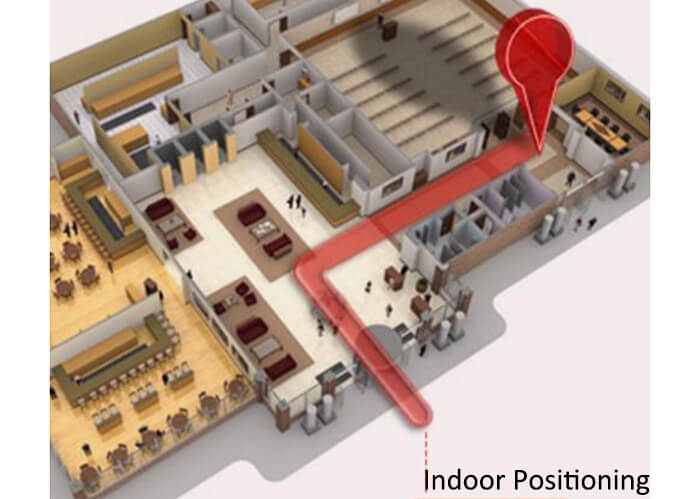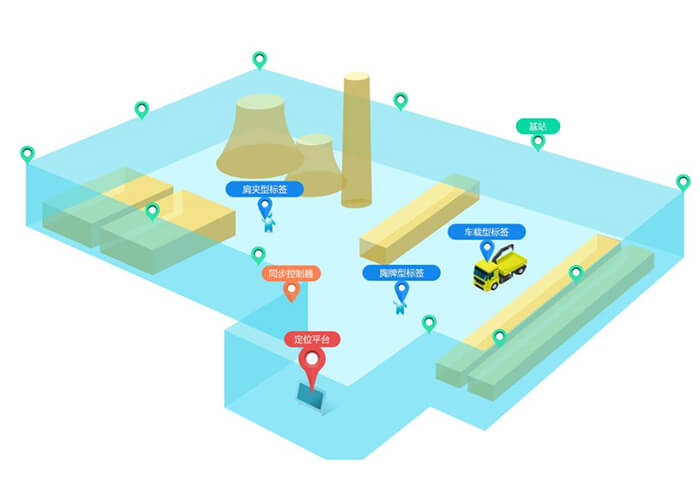WiFi vs Bluetooth vs UWB, who has higher indoor positioning accuracy?
In the context of the Internet of Everything, the acquisition and application of location information are becoming more and more important in project implementation. WiFi vs Bluetooth vs UWB, Compared with outdoor positioning, the working environment of indoor positioning is more complex and detailed, and its technology is more diverse.
In the future, indoor positioning technology will sweep all aspects of our production and life, such as smart factory personnel and cargo management and scheduling, production safety management, underground parking lot car navigation, smart building personnel/visitor positioning management, exhibition location navigation, etc.
Under normal circumstances, we can divide indoor positioning technology into:
Wi-Fi positioning
ZigBee positioning
Bluetooth positioning
UWB positioning
RFID positioning
Satellite positioning
Low-frequency trigger positioning
Base station positioning
Sonic positioning
Light positioning
Geomagnetic positioning
Etc.
Let’s discuss three common indoor positioning technologies such as WiFi vs Bluetooth vs UWB.
1. WiFi Technology

Around 2010, Wi-Fi positioning began to be applied in the field of personnel monitoring based on location tags. In 2013, mobile phone-based Wi-Fi detection and other applications also emerged.
At present, Wi-Fi positioning is a popular indoor positioning technology. Its positioning method is based on the signal strength propagation model method and the fingerprint identification method.
The propagation model method of signal strength refers to the use of a certain channel fading model assumed in the current environment to estimate the distance between the terminal and the AP at a known location based on its mathematical relationship. If the user hears multiple AP signals, they can pass through the three sides Positioning algorithm to obtain the user’s location information;
The fingerprint identification method is based on the propagation characteristics of Wi-Fi signals, combining the detection data of multiple APs into fingerprint information, and comparing it with reference data to estimate the possible position of a moving object.
Wi-Fi can be used to cover some scenes where the positioning accuracy is meter-level. This technology is suitable for people/vehicle positioning and navigation, medical institutions, shopping malls, theme parks, and other scenes.
2. Bluetooth Technology

Around 2014, Bluetooth-based positioning technology began to be applied in the field of monitoring and positioning. In July 2017, Bluetooth mesh was officially launched. In one and a half years, more than 105 products with Bluetooth mesh network functions have been certified, including chip, a protocol stack, module, and terminal product suppliers.
In order to meet the growing demand of the location service market, the new Bluetooth 5.1 standard has added a new direction-finding function, which can help the device to clarify the direction of the Bluetooth signal, and then help developers to interpret the Bluetooth proximity solution of the device directly to achieve centimeter-level position Accurate Bluetooth positioning system.
Location-based Bluetooth service solutions are generally divided into two categories: proximity solutions and positioning systems. Whether it is real-time positioning or indoor positioning, the principle is similar.
That is, the RSSI (received signal strength) mechanism is added to the data packet transmission, and the approximate range of the product is virtualized through RSSI, and then the trilateral measurement method is used to achieve mutual intersection The measurement algorithm is finally completed indoor positioning.
Bluetooth positioning, as long as the device’s Bluetooth function is turned on, it can be located. Bluetooth transmission is not affected by line-of-sight, but for complex space environments, the stability of the Bluetooth system is slightly worse, and it is greatly interfered with by noise signals, and the price of Bluetooth devices and equipment is relatively expensive.
According to the “2019 Bluetooth Market Update”, location services have become the fastest-growing Bluetooth solution, and its compound annual growth rate is expected to reach 43% in the next five years.
Bluetooth positioning is mainly used to locate people in a small area, such as a single-story lobby or a store, and has now been used by some manufacturers to promote LBS.
3. UWB Technology

In recent years, with the maturity of UWB chip solutions and the decline in cost, domestic companies researching UWB positioning technology continue to emerge. UWB is a wireless positioning technology with a high transmission rate (up to 1000Mbps or more), low transmit power, and strong penetrating ability.
Industries currently using UWB positioning technology are tunnels, chemical plants, prisons, hospitals, nursing homes, mines, and other industries.
UWB positioning uses TDOA (Time Difference of Arrival) and AOA positioning algorithms to analyze the label position by multiple sensors. It has the characteristics of the multipath resolution, high accuracy, and positioning accuracy up to centimeter-level.
TDOA is a method of positioning using time difference of arrival, also known as hyperbolic positioning. The tag card sends a UWB signal to the outside, and all base stations within the wireless coverage of the tag will receive the wireless signal.
If there are two base stations with known coordinate points that receive the signal, and the distance between the tag and the two base stations is different, then the time points when the two base stations receive the signal are different.
Positioning systems based on signal time, such as UWB, need to be redeployed once they are blocked by a wall. With the same area, the number of rooms doubles, and the number of base stations will also double, making it easier to deploy base stations in open scenarios.
Wireless local area network positioning is mainly used in indoor positioning. Depending on the characteristics of the signal and the network architecture, its positioning accuracy can range from centimeters to meters.
In different scenarios, when we choose a specific positioning technology, we must not only consider the accuracy performance, but also the cost and power consumption.
Therefore, although UWB has the highest accuracy, other positioning technologies have their own markets.
Besides the WiFi vs Bluetooth vs UWB article, you may also be interested in the below articles.
4G vs 5G: What is the difference between 4G and 5G?
How to Choose the Best Antenna for Lora?
